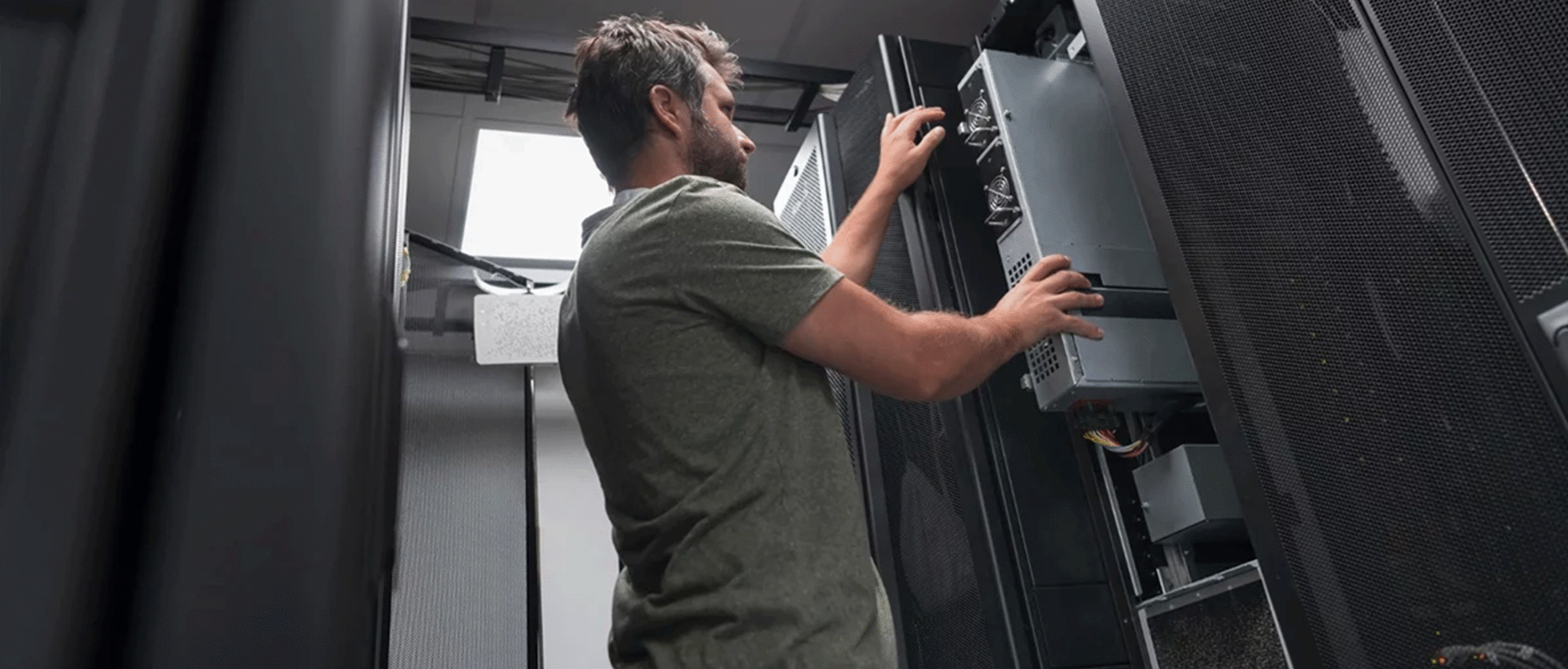Data Center Migration Best Practices – Ensuring a Smooth Relocation
Park Place Professional Services
A data center migration involves moving IT assets from one data center environment to another. In some cases, this means physically relocating hardware, although the process could also be a migration from on-premises hosting to the cloud or simply moving a virtual machine (VM) from one part of a data center to another.
The stakes can be high, especially when the migration involves sensitive data or critical applications. A variety of problems can arise, and none of them are much fun to solve. This article can help you avoid the worst of them. It shares several popular data center migration best practices, which enable you to reduce risks of data corruption, security problems, and cost overruns, among other issues.
Jump-to Section
What is Data Center Migration?
Problems with Data Center Relocation and Migration
Top 9 Data Center Migration Best Practices
1. Consider Business Aspects of the Migration
2. Engage in Thorough Planning Practices
3. Focus on Security and Compliance
5. Treat Data Migration Separately
8. Backup and Set Up Rollbacks
9. Validate and Optimize Post-Migration
Ensure a Successful Data Center Migration with Park Place Technologies
What is Data Center Migration?
A data center migration is the process of moving IT assets, such as servers, data, and applications, between hosting environments. For example, a data center migration might mean switching from hosting servers in a company-owned data center to a colocation facility or a cloud platform like Microsoft Azure. For this latter activity, research suggests that nearly 50% of enterprises will migrate at least half of their applications to the cloud in the coming year (via O’Reilly).
There are various reasons why you may move data center assets, but many of them have to do with cost, either directly or indirectly. Consolidating data centers after a corporate reorganization is one example of data center migration as a cost-saving move. Alternatively, you might be pursuing a “cloud-first” strategy that requires you to move most of your systems to a cloud platform, abandoning the traditional on-premises data center.
Keep in mind that a data center migration and data center relocation are not always the same thing, even if the terms get used interchangeably. A data center migration could refer to any number of IT asset moves that occur between or within a data center. A relocation, in contrast, usually only involves the movement of IT hardware between sites.
Problems with Data Center Relocation and Migration
While it is possible to have a successful data center migration without incident, the reality is that the process is prone to problems. Data center migration considerations are many and varied.
Common problems include:
- Data loss or data corruption—Moving data around creates risks of loss or corruption. For example due to network interruptions during data migration, or incompatible data formatting between source and target.
- Unexpected costs, such as from the need to buy extra software licenses or unanticipated vendor-specific support processes.
- Network issues, such as incorrect IP addresses or poorly planned configurations that fail to meet throughput or performance requirements.
-
Project management challenges. A data center migration is an IT project, so it is susceptible to all the problems one can encounter with planning, resource allocation and scheduling.
Research by the Journal of Information Security found that 64% of data migrations failed to take place on time.
- Application incompatibility, such as from the need to run on new operating systems or issues with application dependencies that get disrupted by the move.
- Security and compliance issues, such as having risk exposure due to new hardware being deployed with “default” security settings.
- Hardware resource difficulties, such as CPU or GPU capacities not being well aligned with workloads.

Top 9 Data Center Migration Best Practices
Data center move best practices have evolved over time to help you avoid problems large and small. Here are nine of the top data center relocation best practices.
As is usual with these sorts of guidelines, not every element will apply to your environment. Scale and scope also matter. The kind of planning and stakeholder engagement you do for moving a server rack to a new location is going to be different from the level of activity required for migrating an enterprise resource planning (ERP) solution to the cloud.
Some of these practices stand on their own, but they can also be interdependent. A decision you make in one area will affect another. For instance, the choice of CPUs may have an impact on performance requirements, so it makes sense to track how the elements of a plan affect one another.
1. Consider Business Aspects of the Migration
Even if the reasons for a data center migration are technical in nature, the underlying drivers will be related to the business. For example, the business might want to improve customer experience by deploying applications closer to end users, which lowers latency.
It is therefore wise to start the migration planning process by thinking through how it affects the business, the people, and departments who want to know about it.
Key aspects to consider include:
- What are the business goals for migration — cost savings, productivity, user experience?
- Who are the stakeholders who need to know about the migration? (It will be necessary to communicate with these stakeholders throughout the migration process.)
- Will staff training be required? If so, what are the details, budget, schedule, etc.?
- What project management factors need to be addressed, e.g., who will manage the project? Who will that person report to? Will there be accountability for problems?
2. Engage in Thorough Planning Practices
An effective migration requires careful planning, which starts with an assessment of existing infrastructure mapped to the target site.
The plan should include:
- The scope of the migration and the systems it includes—with stakeholders able to comment and modify the plan as needed. Consensus is important for avoiding misunderstandings later on.
- Performance parameters, system response times and storage IoPs, for example.
- A phased project plan or data center movement checklist with clarity around timelines, milestones, and resources
- Potential documentation and auditing steps. This will depend on the scope and significance of the migration, but when complex, business-critical systems are on the move, it may pay to invest in documenting the migration process and auditing the results.
3. Focus on Security and Compliance
A data center migration may not trigger any security or compliance problems, but it pays to be diligent on this front in the planning and execution stages. The starting point should be a risk assessment that examines how the migration process, and the destination site, have the potential to create risk exposure.
For instance, the process of backing up data prior to a migration could create unsecured copies of data that become vulnerable to breach. It is also possible for privacy safeguards to fall off during a data transfer. Alternatively, security controls are often tied to specific infrastructure elements, so a change in infrastructure hosting can render controls deficient. Regulatory issues could involve violations of data sovereignty laws.
4. Build a Complete Inventory
A successful migration requires a comprehensive inventory of IT assets and infrastructure elements. The disposition of IT assets identified for the migration should be clear: Move, replace, or dispose (with assurance of data erasure for the purposes of security and compliance).
The inventory will ideally also include a detailed mapping of data infrastructure and network architecture. For example, the map should show dependencies and integrations, such as between internal and external data sources. These connections can easily get broken in a move, so it’s best to identify them before you start shutting down systems and starting them up in a new data center.
One additional step here is to identify your most critical data and applications that are being migrated. While every IT asset counts, certain datasets and systems are more important to a business than others. You may determine that the ERP solution is essential to business operations, so it should merit the most attention in the migration to ensure that nothing goes wrong with the move.
5. Treat Data Migration Separately
It may be optimal to create a distinct execution track for data migration. Reasons for this approach include the inherent value and sensitivity of the data, as well as the accompanying business risks that arise from potential data loss, corruption, or breach.
There are also purpose-built data migration tools you can deploy for a data center migration, and it is probably smart to take advantage of their capabilities to minimize problems and inefficiency.
6. Automate When Possible
A data center migration project will include hundreds or even thousands of discrete steps. Relying on manual processes for execution is inefficient and prone to error. Automation should be the preferred mode of action whenever possible, assuming a high-quality automation toolset.
For certain platforms, such as SAP, specialized migration tools can automate the bulk of the move and save the migration team a great deal of time and frustration.
7. Test the Migration
It is highly recommended to test the migration before the full cutover. Most cloud platforms and data center management solutions enable some form of migration testing. It is optimal to establish a scaled-down version of the migration in a protected “sandbox” and test the move to see how it works.
You might discover some surprises, such as a previously undocumented Application Programming Interface, that needs attention before embarking on the actual migration.
8. Backup and Set Up Rollbacks
It is absolutely imperative that you back up any data that’s being migrated. The migration process can destroy or damage data, so you will want a safe copy to restore in that case. You will want to test that backup.
Additionally, the target systems should be configured with rollback capabilities. That way, if the migration process damages the dataset or system settings, you can roll it back to before the migration cutover point and start over with intact digital assets.
9. Validate and Optimize Post-Migration
The migration process does not end after the cutover. Rather, the best practice is to engage in several post-migration processes. These include further testing and validation to ensure that the process has been completely successful as planned.
Performance testing and ongoing monitoring also make sense, as they highlight potential areas where performance is not meeting levels established in the planning process. Tuning and reconfigurations may also be in order.

Ensure a Successful Data Center Migration with Park Place Technologies
The above best practices can be difficult to execute if you have a small team or find yourself not having the time to relocate your IT assets. For that reason, an expert data center Professional Services organization should be prioritized to help.
Park Place Technologies has an experienced team of engineers with over 10+ years in handling data center relocation initiatives. We promise a seamless migration with minimal downtime, delivering a robust IT setup designed for long-term high performance.
Contact Park Place Technologies to see how we can help.


